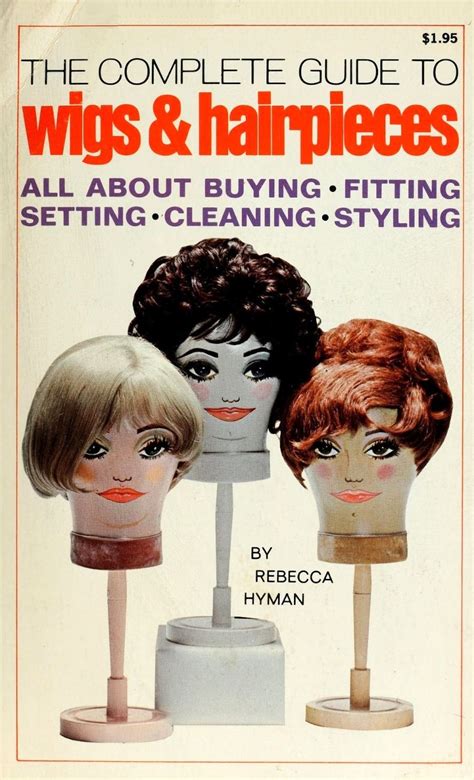Introduction:

Wigs have been around for centuries, transforming appearances, boosting confidence, and serving various purposes. In today’s modern era, they continue to captivate the fashion and health industries. This comprehensive guide delves into the captivating world of wigs, exploring their history, types, benefits, and applications.
Chapter 1: The History of Wigs: A Timeline of Artistic Expression
| Period | Origin | Significance |
|---|---|---|
| Ancient Egypt | 3000 BC | Ornate hairpieces made of natural and synthetic materials |
| Ancient Greece | 500 BC | Theatrical masks and wigs for actors |
| Classical Rome | 100 AD | Wigs as a sign of wealth and status |
| Renaissance Europe | 1400 AD | Intricate wigs worn by nobles and royalty |
| 18th Century France | 1700 AD | Elaborate wigs as a fashion statement |
| 19th Century | 1800 AD | Human hair wigs became popular |
| 20th Century | 1900 AD | Synthetic wigs introduced |
| 21st Century | 2000 AD | Wigs for fashion, medical, and cosmetic reasons |
Chapter 2: Types of Wigs: From Natural to Artificial
1. Natural Hair Wigs (Human Hair):
– Made from real human hair
– High-quality, durable, and customizable
– Pricey and require regular maintenance
2. Synthetic Hair Wigs (Artificial Hair):
– Made from synthetic fibers like nylon or acrylic
– Affordable, easy to maintain, and come in a wide range of colors and styles
– May be less breathable and less natural-looking than human hair wigs
3. Lace Wigs:
– Made with a thin, sheer lace base that allows the hair to be parted and styled freely
– Natural and undetectable hairline
– High-maintenance and more expensive than other wigs
4. Full Cap Wigs:
– Cover the entire head like a cap
– Economical and easy to wear
– May not provide the most natural look
Chapter 3: Benefits of Wigs: Beyond Aesthetics
1. Concealing Hair Loss:
– Medical conditions (e.g., alopecia, chemotherapy)
– Hormone imbalances
– Age-related hair loss
2. Changing Appearance:
– Experiment with different hairstyles and colors
– Enhance confidence and self-esteem
3. Hair Protection:
– Shield hair from environmental damage (e.g., sun, pollution)
– Avoid hair damage from chemical treatments
4. Medical Applications:
– Cranial prosthetics for individuals with hair loss due to burns or surgery
– Therapeutic wigs for cognitive stimulation in dementia patients
Chapter 4: Wigology: Unveiling the Science Behind Wigs
1. Cap Construction:
– Different types of caps determine fit, comfort, and detectability
– Monocap, wefted cap, lace cap
2. Hair Density:
– The amount of hair on the wig
– Influences the fullness and naturalness of the wig
3. Color and Texture:
– Match or complement skin tone and hair texture
– Various techniques for creating realistic colors and textures
Chapter 5: Wig Applications: A Versatile Solution
1. Fashion and Beauty:
– Transform looks instantly
– Create unique hairstyles
– Complement costumes and outfits
2. Medical and Therapeutic:
– Conceal hair loss due to medical conditions
– Provide comfort and support for cancer patients
– Promote cognitive health
3. Role-Playing and Entertainment:
– Enhance stage performances
– Embody different characters
– Create realistic illusions
Chapter 6: Strategies for Choosing the Perfect Wig
1. Determine Your Needs:
– Purpose of wig (e.g., fashion, medical)
– Level of comfort and maintenance desired
2. Match Your Hair:
– Color, texture, and density
– Consider hair length and style
3. Find the Right Cap Construction:
– Type of cap (e.g., lace, monocap)
– Fit and comfort preferences
4. Set a Budget:
– Wigs range from affordable to high-end
– Consider materials, construction, and maintenance costs
Chapter 7: Pros and Cons: Weighing the Benefits and Drawbacks
Pros:
- Conceal hair loss or thinning
- Change appearance instantly
- Protect hair from damage
- Boost self-confidence and enhance beauty
Cons:
- Can be expensive to purchase and maintain
- May not be as breathable or comfortable as natural hair
- Requires proper care and storage to prevent damage
Chapter 8: The Wig Lexicon: Defining the Jargon
- Bald cap: A cap worn under a wig to create a smooth surface
- Density: The amount of hair on the wig
- Lace front: A wig with a lace base along the hairline for a natural look
- Remy hair: Human hair with cuticles intact for better quality and durability
- Synthetic hair: Artificial hair fibers used to make wigs
Chapter 9: Care and Maintenance: Keeping Your Wig Pristine
1. Brushing and Detangling:
– Use a wide-toothed comb or wig brush
– Brush gently to avoid damage
2. Washing:
– Use lukewarm water and wig shampoo
– Condition as needed
3. Drying:
– Air dry on a wig stand
– Avoid using heat styling tools
4. Storage:
– Store wigs on a wig stand or in a wig box
– Protect from dust and sunlight
Chapter 10: The Future of Wigs: Innovations and Applications
1. Biomimetics:
– Creating wigs that mimic the natural biology of hair
– Enhancing breathability and comfort
2. Medical Advancements:
– Developing wigs for specific medical conditions
– Improving materials and construction for maximum comfort
3. Artificial Intelligence:
– Using AI to personalize wigs based on individual facial features and hair characteristics
Conclusion: The Enduring Appeal of Wigs
Wigs have transcended time and culture, serving diverse purposes and empowering individuals to express their individuality and enhance their well-being. As technology advances and innovation continues, the future of wigs promises even more versatility, comfort, and personalization. Whether for medical, fashion, or entertainment reasons, wigs will continue to captivate and transform lives for years to come.
